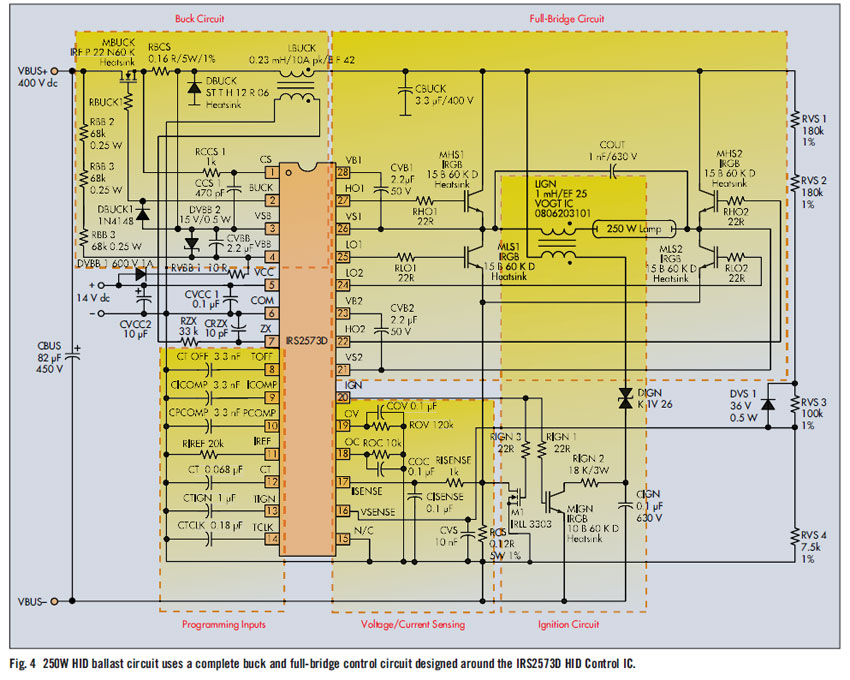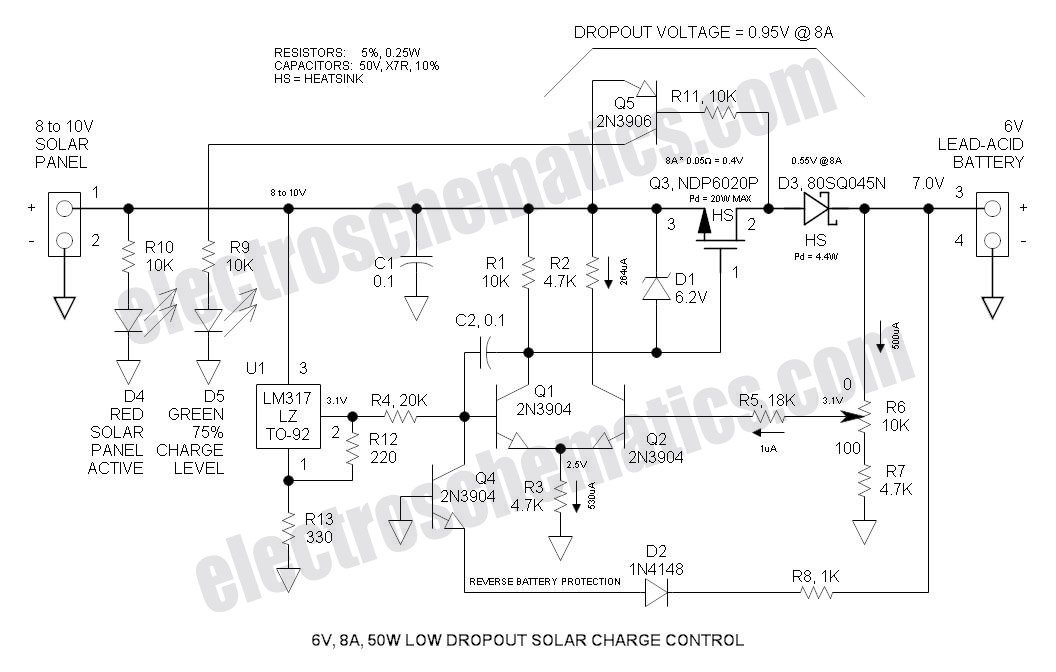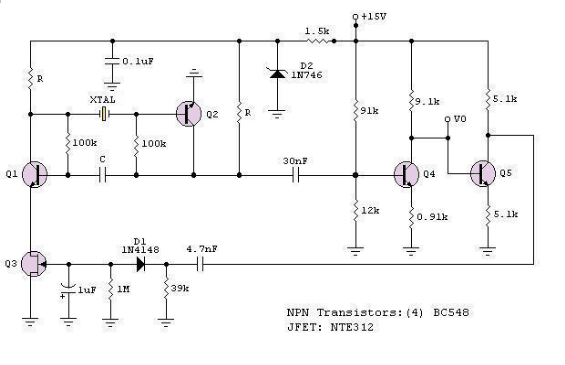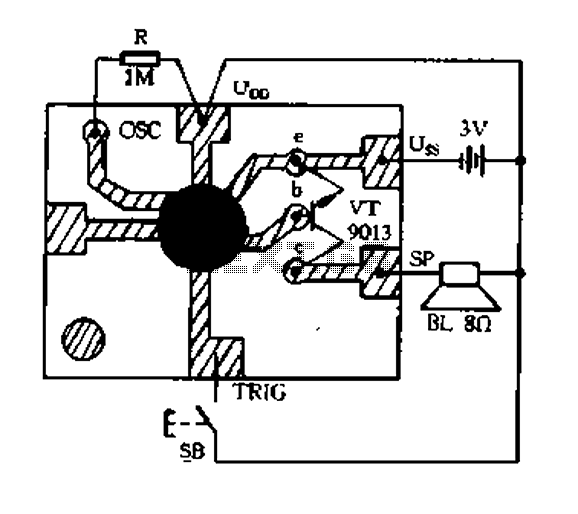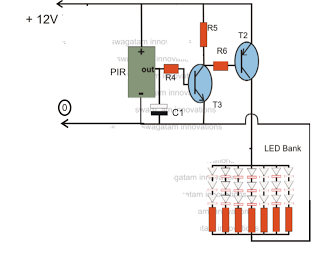
DC Motor Control

The circuit operates a small motor for opening and closing a pair of curtains. The DC motor consists of six basic components: commutator, stator, rotor (also known as armature), axle, field magnet(s), and brushes. Key components include LED, diode, resistor, motor, and transistor.
The circuit designed for operating a small DC motor to control curtain movement utilizes several essential electronic components to achieve its functionality. The DC motor, fundamental to the operation, consists of six primary components: the commutator, which reverses the current direction to maintain rotation; the stator, which provides a stationary magnetic field; the rotor (or armature), which rotates within the magnetic field; the axle, which connects to the motor shaft; the field magnets, which create the magnetic field; and the brushes, which conduct electricity to the rotor.
The additional components in the circuit include an LED, which serves as an indicator light to show the operational status of the motor, a diode for protecting the circuit from reverse voltage spikes generated when the motor is turned off, a resistor to limit current flow and protect sensitive components, and a transistor that functions as a switch to control the motor's operation based on input signals.
The schematic diagram for this circuit would typically illustrate the connections between these components. The motor would be connected to a power source, with the transistor positioned to control the flow of current to the motor. The LED would be connected in parallel with the motor, illuminated when the motor is active. The diode would be placed in reverse parallel with the motor terminals to safeguard against back EMF. The resistor would be connected in series with the LED to limit its current and prevent damage.
This configuration allows for effective control of the curtain motor, enabling it to open and close smoothly while providing visual feedback through the LED. The circuit can be further enhanced with a microcontroller for automated control or remote operation, integrating additional sensors or timers as needed.To operate a small motor used for opening and closing a pair of curtains. DC motor has six basic components: commutator, stator, rotor (a. k. a. , armature), axle, field magnet(s), and brushes. Component: LED, Diode, Resistor, Motor, Transistor. [hampatong. com] Tags: circuit diagram, control circuit, control diagram, control schematic, Diod e, electronic circuit, electronic control, LED, Motor, Resistor, schematic diagram, Transistor We aim to transmit more information by carrying articles. Please send us an E-mail to wanghuali@hqew. net within 15 days if we are involved in the problems of article content, copyright or other problems.
We will delete it soon. 🔗 External reference
The circuit designed for operating a small DC motor to control curtain movement utilizes several essential electronic components to achieve its functionality. The DC motor, fundamental to the operation, consists of six primary components: the commutator, which reverses the current direction to maintain rotation; the stator, which provides a stationary magnetic field; the rotor (or armature), which rotates within the magnetic field; the axle, which connects to the motor shaft; the field magnets, which create the magnetic field; and the brushes, which conduct electricity to the rotor.
The additional components in the circuit include an LED, which serves as an indicator light to show the operational status of the motor, a diode for protecting the circuit from reverse voltage spikes generated when the motor is turned off, a resistor to limit current flow and protect sensitive components, and a transistor that functions as a switch to control the motor's operation based on input signals.
The schematic diagram for this circuit would typically illustrate the connections between these components. The motor would be connected to a power source, with the transistor positioned to control the flow of current to the motor. The LED would be connected in parallel with the motor, illuminated when the motor is active. The diode would be placed in reverse parallel with the motor terminals to safeguard against back EMF. The resistor would be connected in series with the LED to limit its current and prevent damage.
This configuration allows for effective control of the curtain motor, enabling it to open and close smoothly while providing visual feedback through the LED. The circuit can be further enhanced with a microcontroller for automated control or remote operation, integrating additional sensors or timers as needed.To operate a small motor used for opening and closing a pair of curtains. DC motor has six basic components: commutator, stator, rotor (a. k. a. , armature), axle, field magnet(s), and brushes. Component: LED, Diode, Resistor, Motor, Transistor. [hampatong. com] Tags: circuit diagram, control circuit, control diagram, control schematic, Diod e, electronic circuit, electronic control, LED, Motor, Resistor, schematic diagram, Transistor We aim to transmit more information by carrying articles. Please send us an E-mail to wanghuali@hqew. net within 15 days if we are involved in the problems of article content, copyright or other problems.
We will delete it soon. 🔗 External reference
